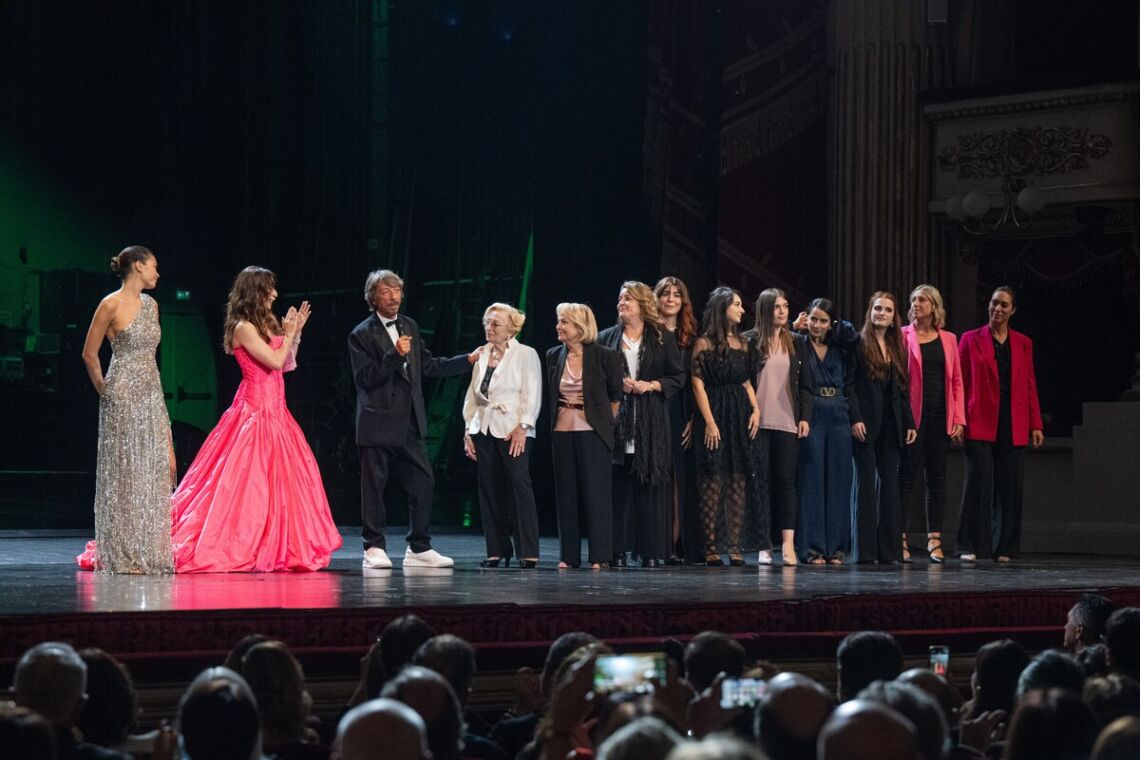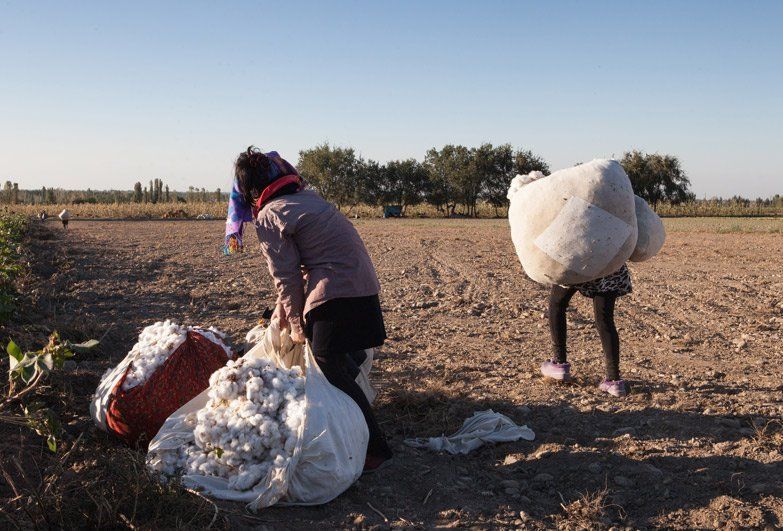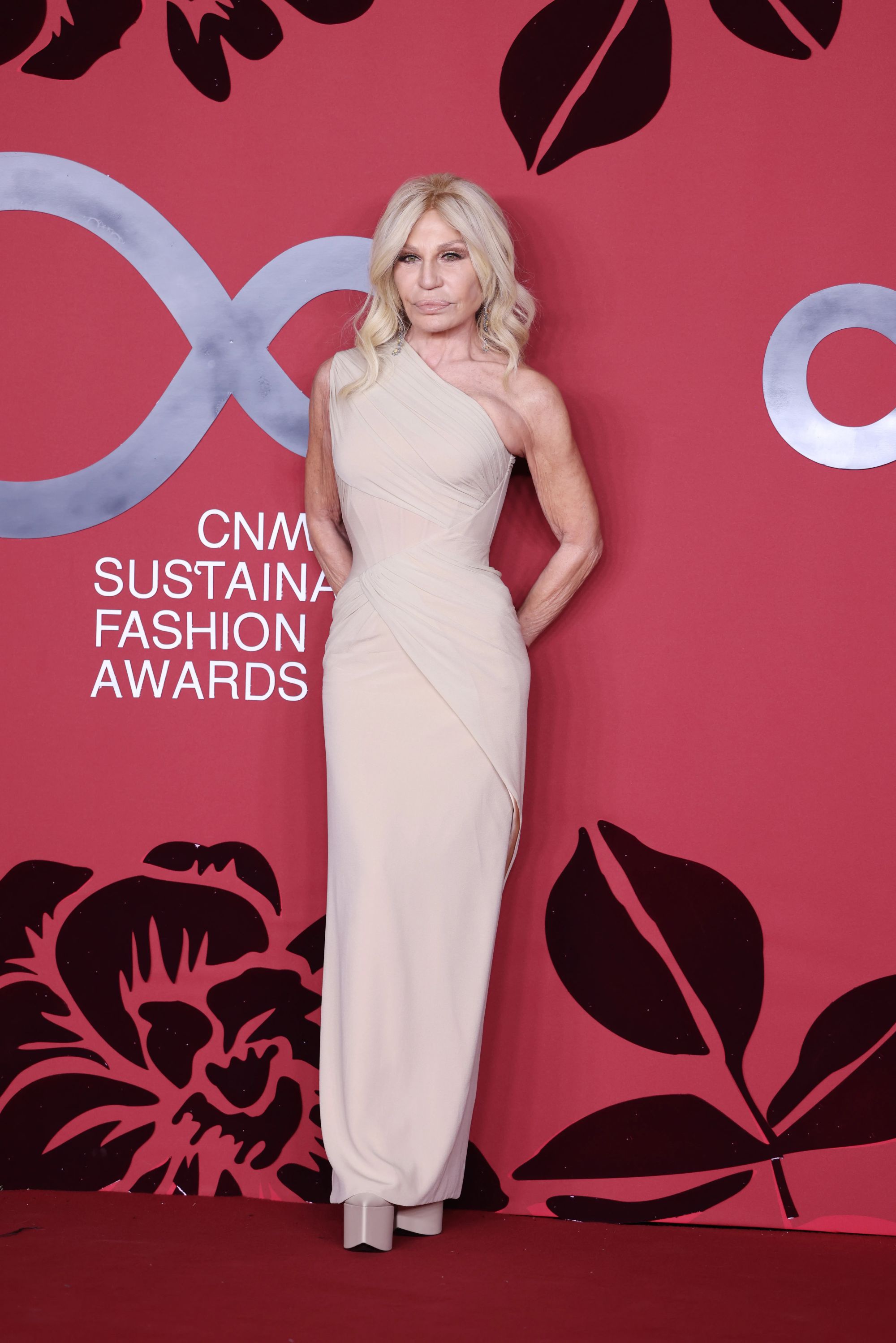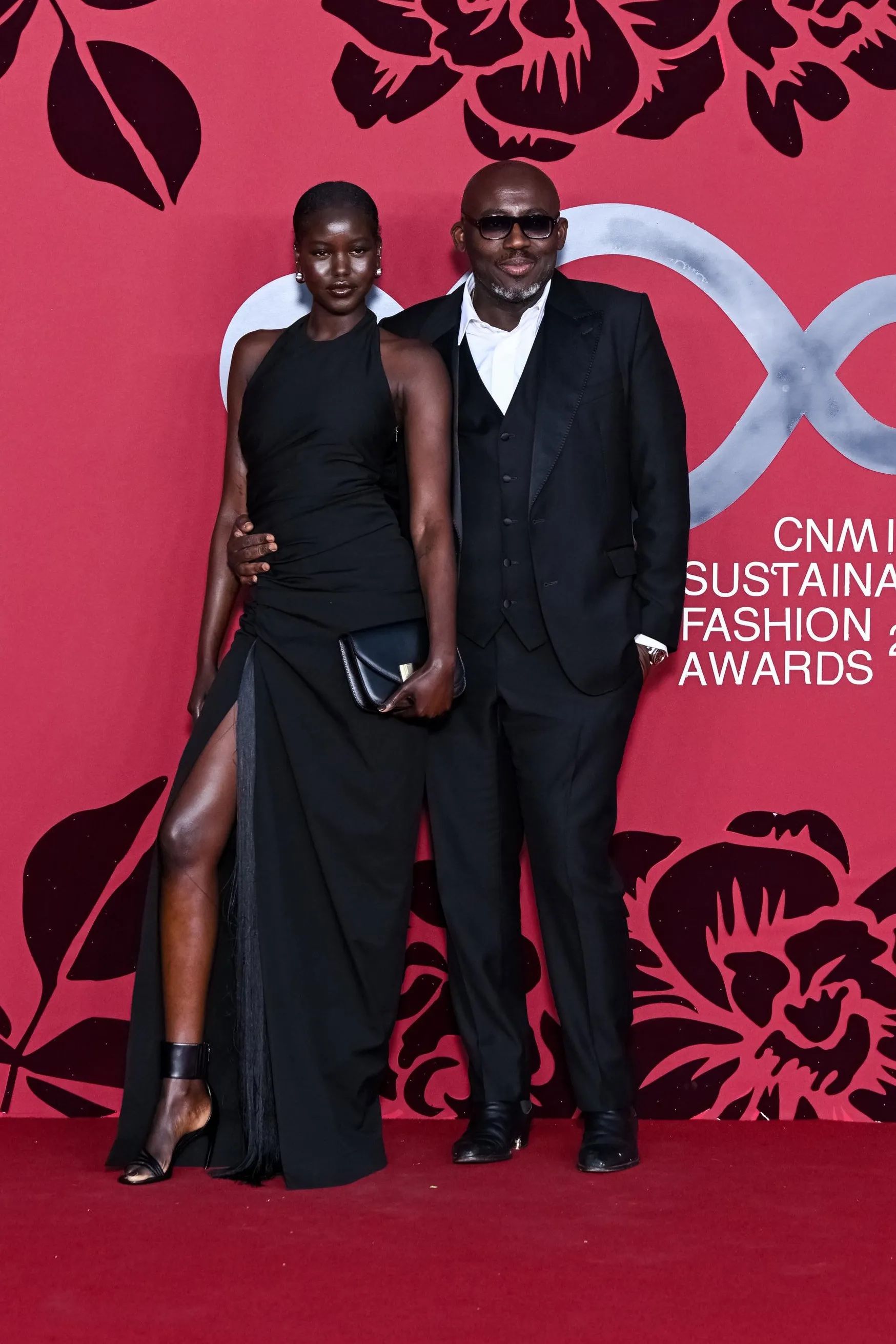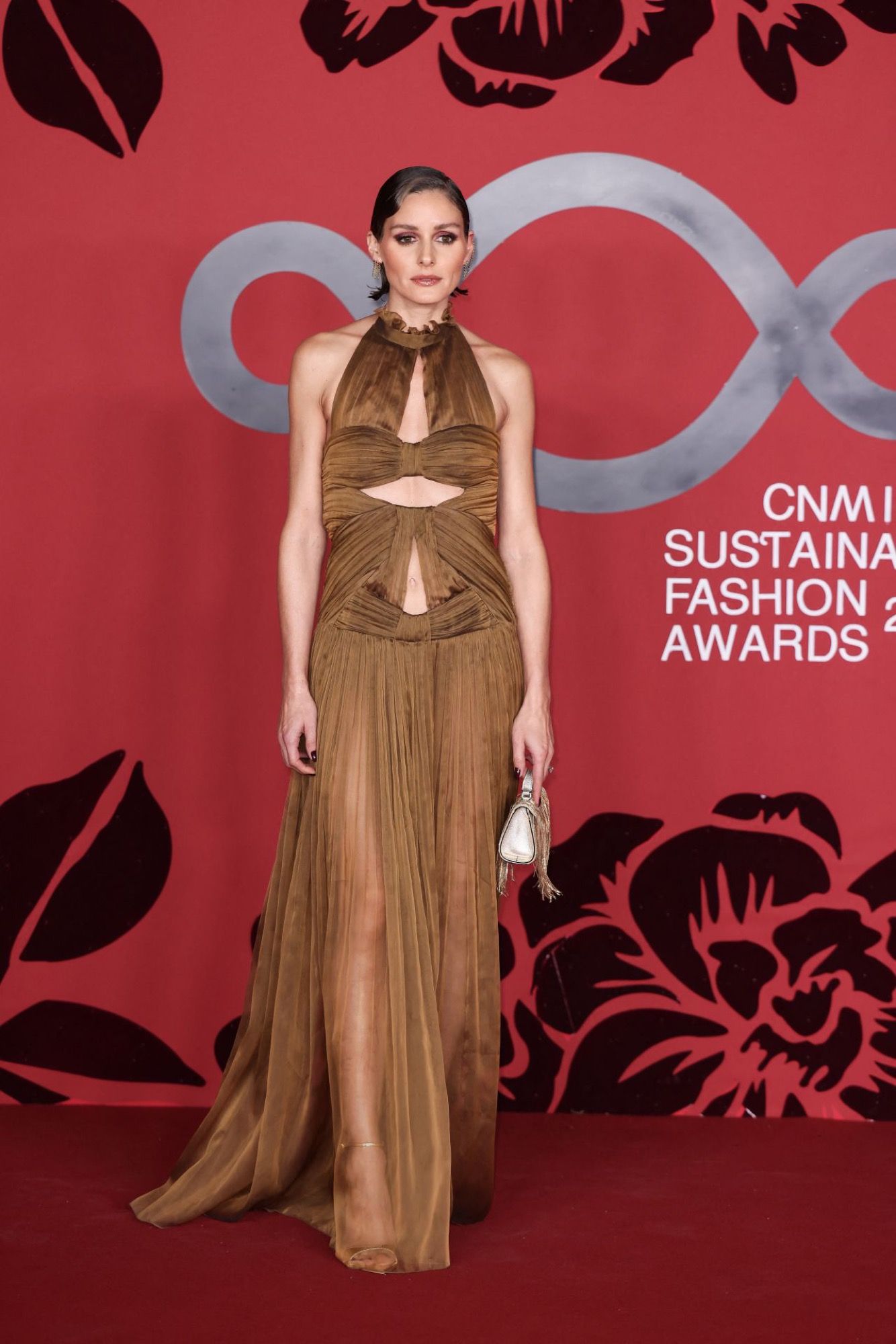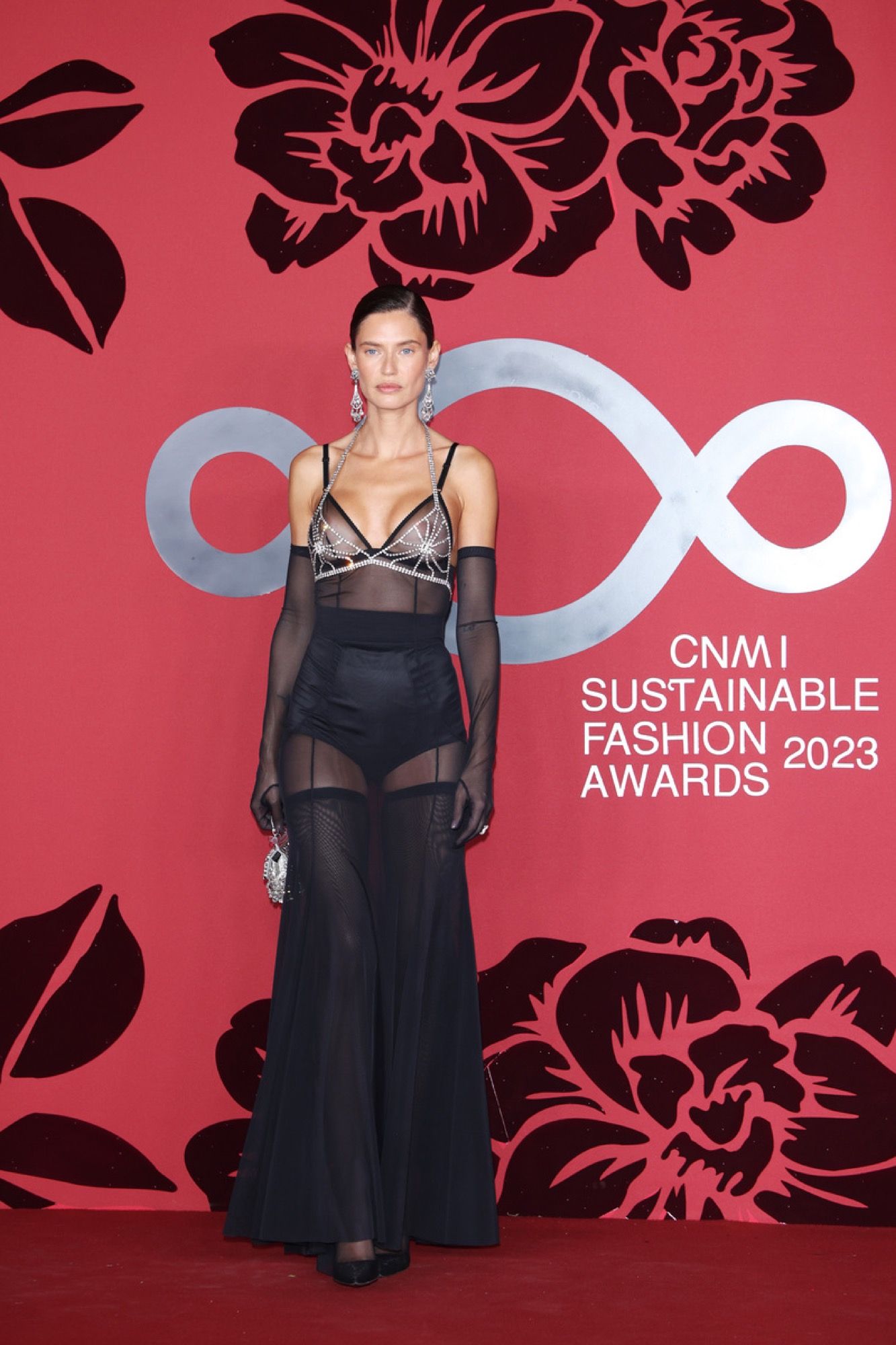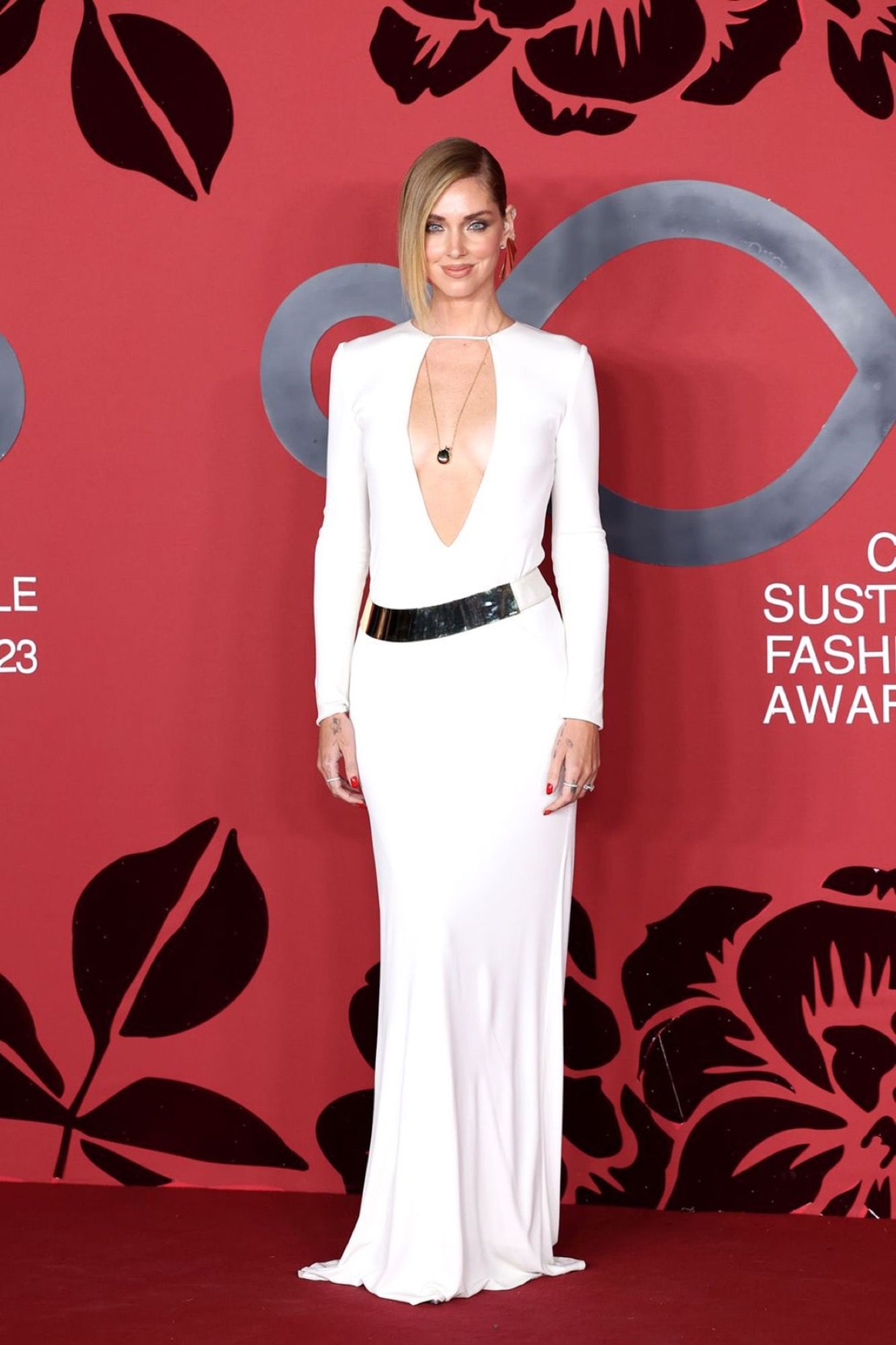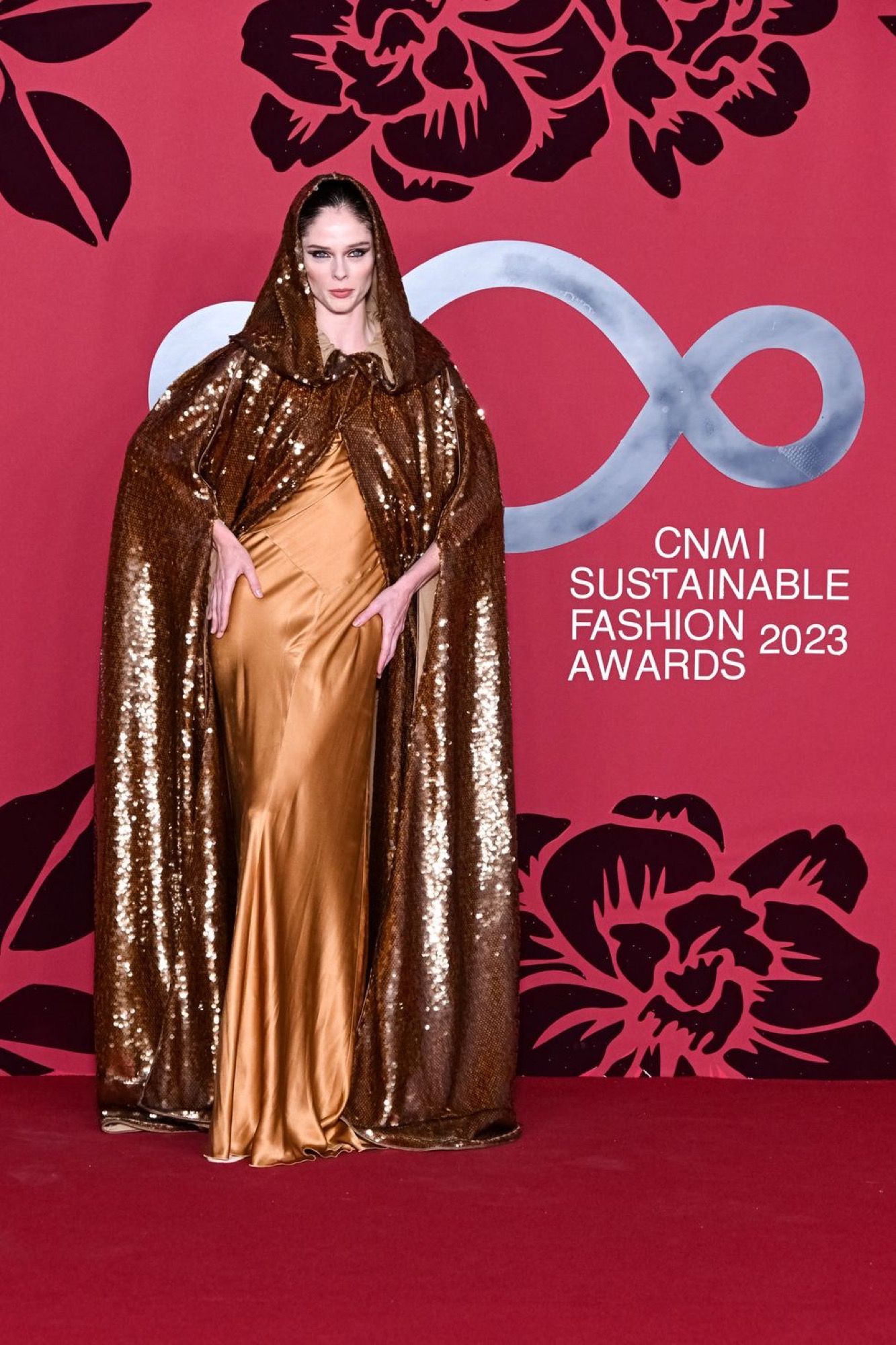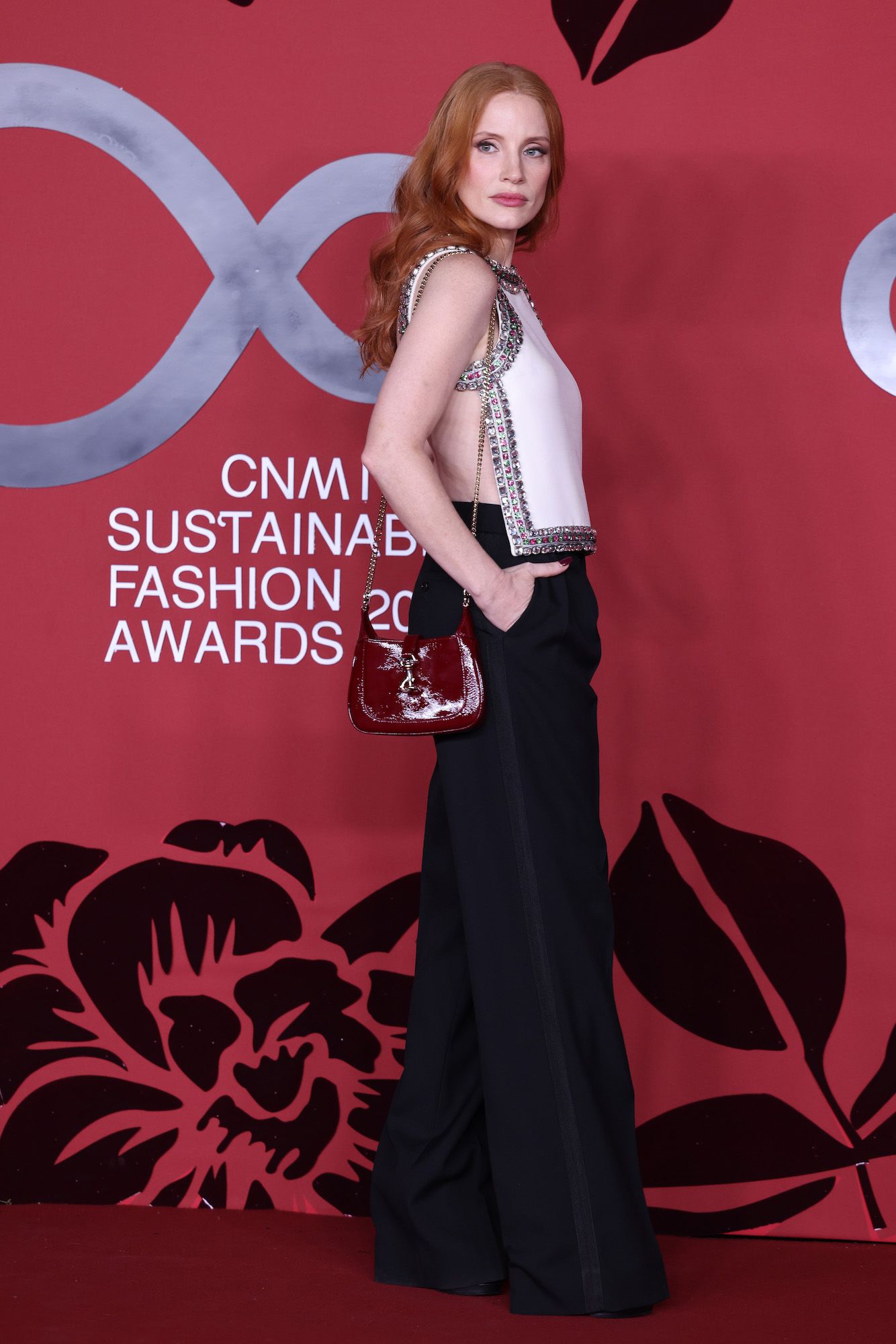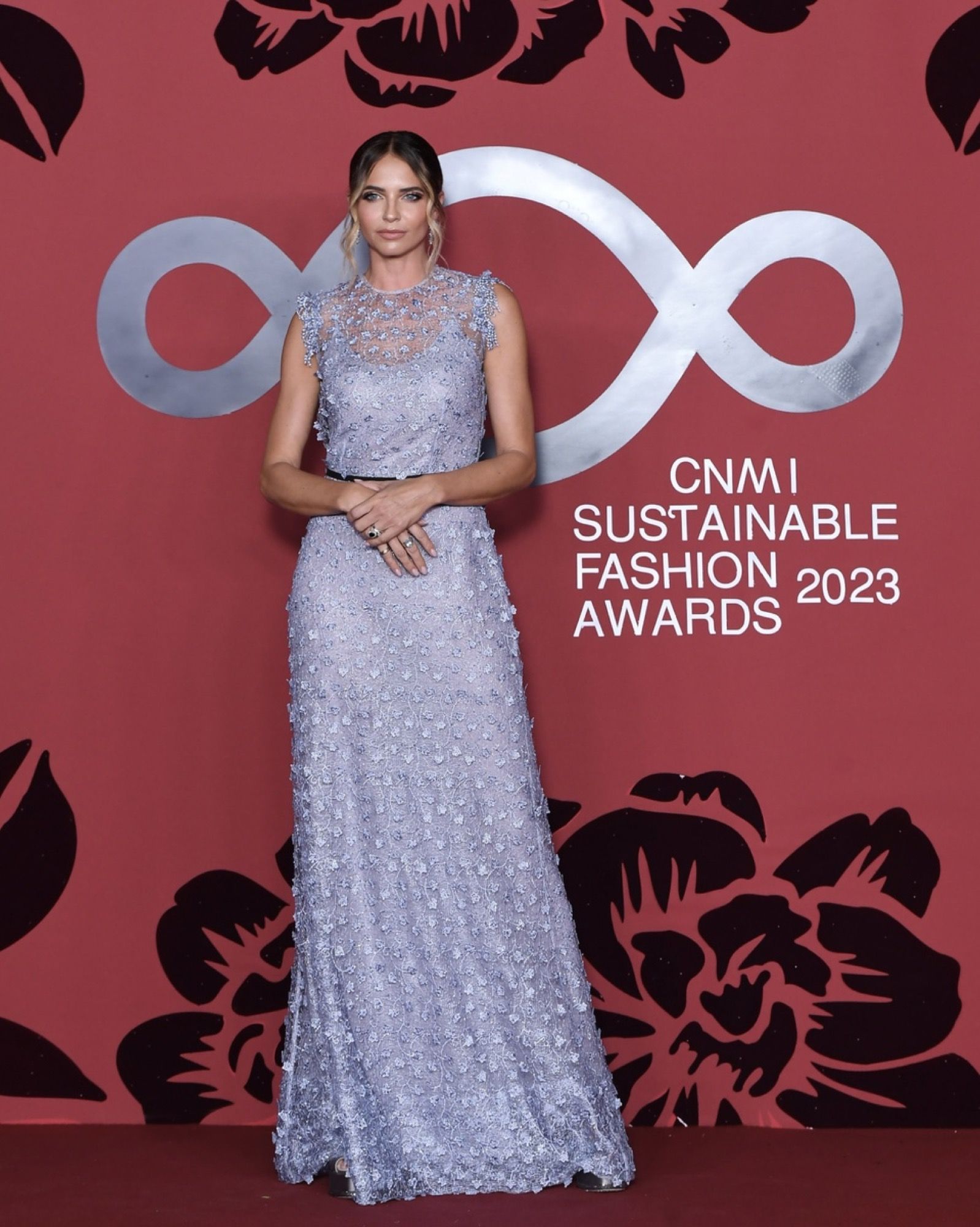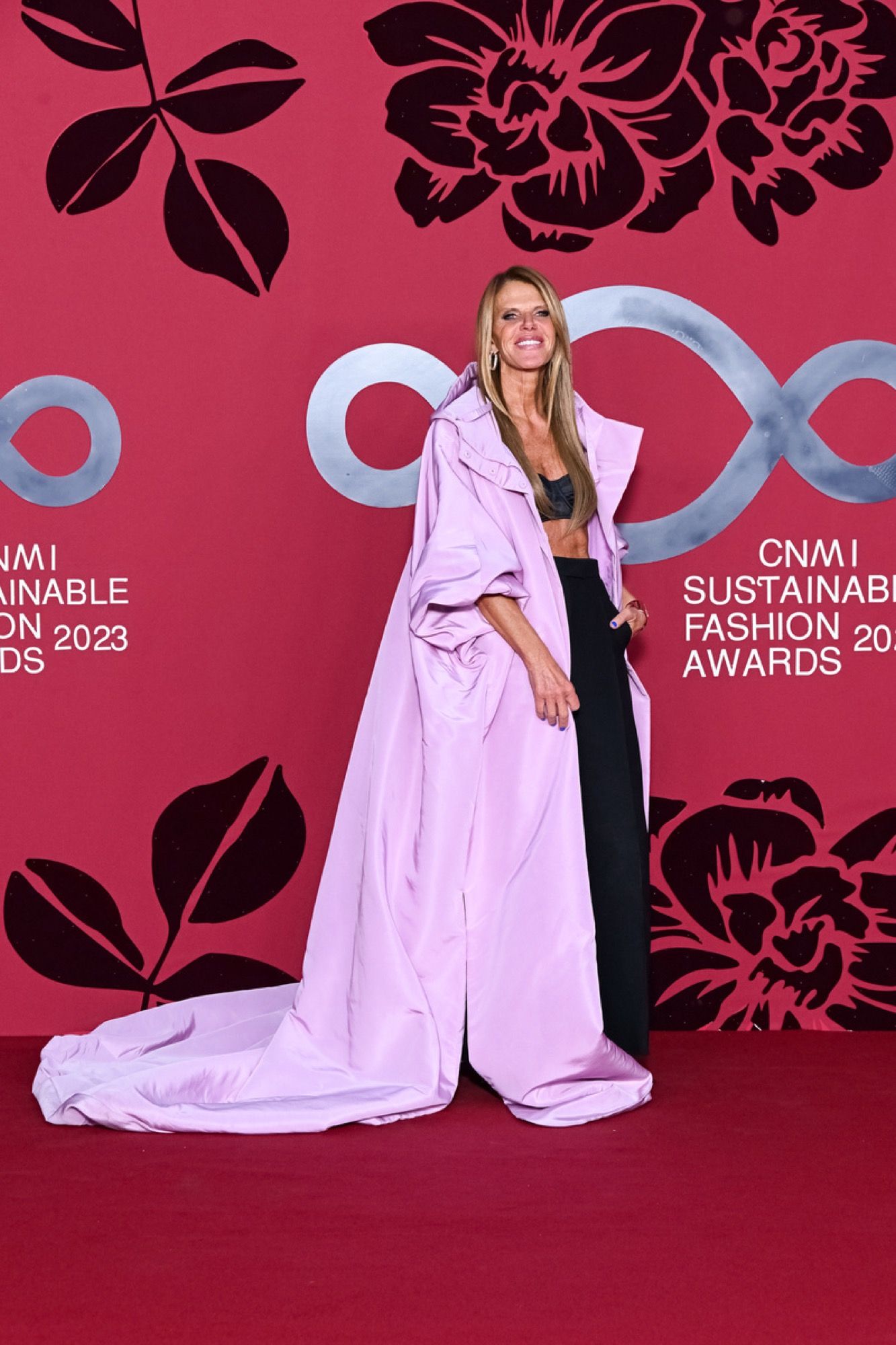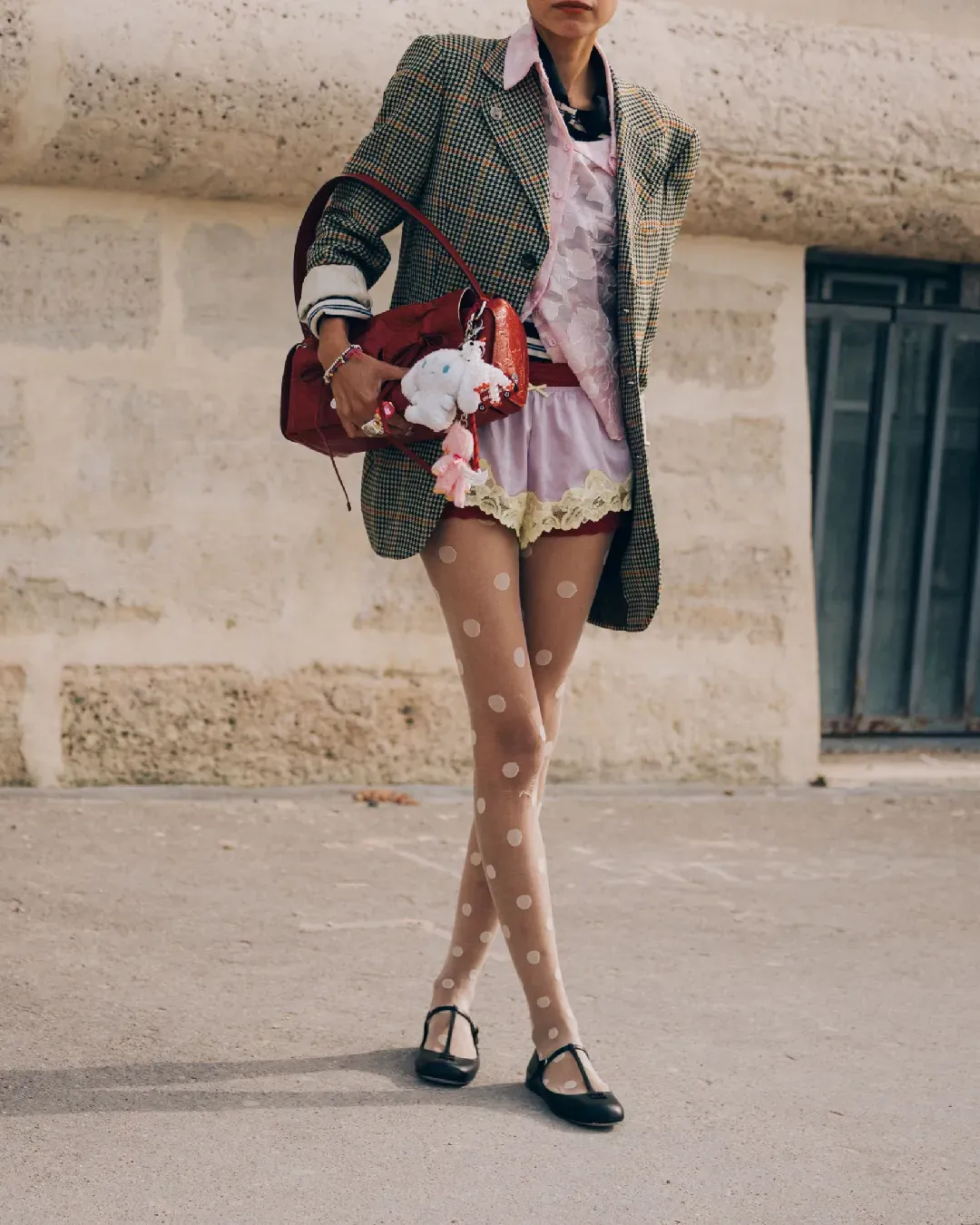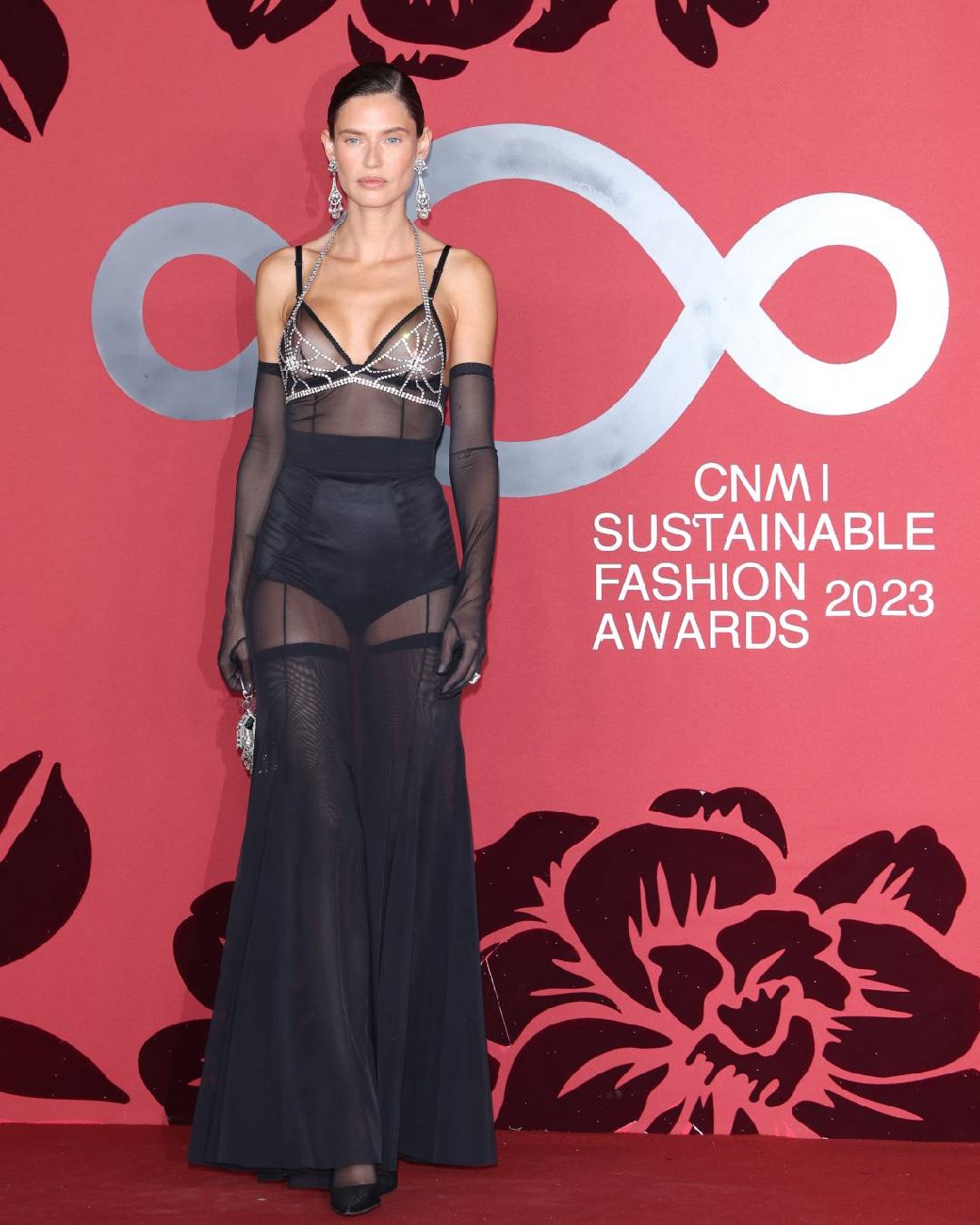
Camera Moda's performative sustainability The CNMI Sustainable Fashion Awards last Sunday spoke of environmentalism in silk and diamond dresses
Last Sunday, at the Sustainable Fashion Awards of Camera Nazionale della Moda Italiana, the new committee consultant Chiara Ferragni wore a vintage Tom Ford dress from the FW96 collection. In a total white look and plunging neckline, the digital entrepreneur looked beautiful. Together with her, the CNMI red carpet was attended by Pierpaolo Piccioli, Donatella Versace, Elodie, Marco de Vincenzo, Drusilla Foer, Cate Blanchett, Marco Mengoni Bianca Balti, Maximilian Davis, the former editor in chief of British Vogue Edward Enninful, and many others. A potpourri of exponents of the fashion, music and film industries, they all decked out, smiled in front of the paparazzi at La Scala in Milan to celebrate Made in Italy fashion and sustainability. But what kind of sustainability did they reward, exactly? Let's see. According to CNMI, the Sustainable Fashion Awards recognise the achievements and ongoing efforts of Italian and international designers and brands in helping to redefine a more sustainable, ethical, circular fashion industry. Despite this, media attention was reserved as always for the looks of the stars who attended the event, and its awards were destined uniquely for the most famous luxury fashion houses. The red carpet - which many didn't hesitate to call green, to keep with the theme - was the first sign of an evening in pursuit of the most glamorous paradox. Despite the archive gowns worn that evening, the following morning the invitee unhesitatingly resumed to posting their #advs.
The Sustainable Fashion Awards winners
Ten winners were awarded. First and foremost Gucci, which won The Ellen McArthur Foundation Award for Circular Economy thanks to its Denim Project, an initiative that certifies the cotton fibres of the brand as a certified regenerative agriculture product, complete with a traceable passport. A textile avant-garde, were it not that the project will start in 2024, that other maisons before Gucci have already been doing it, and that this initiative is not going to be extended to all the collections of the maison. Chiara Ferragni presented The Bicester Award for Emerging Designers to Priya Ahluwalia, a coveted prize which, however, raises several questions about the name of the sponsor - a luxury shopping centre which, by definition, has very little to do with the world of sustainability. After these awards, the time came for the presentation of The Humanitarian Award For Equity and Inclusivity to Donatella Versace and of The Visionary Award to Edward Enninful. From inclusivity to activism, from sustainable Made in Italy fashion to that of young independent creatives, the evening turned what was supposed to be a moment of reflection on the effects of the fashion industry on the Planet into a public penalty-serving exercise carried out by the most prominent figures of the fashion industry. Like the beads of a rosary prescribed by the priest after confession, the Sustainable Fashion Awards went through the themes of inclusivity one by one, ten awards and an Our Father.
Sustainability means transparency
Of all the phrases that were written by the CNMI to herald the new edition of the competition, one in particular stands out. «The fashion industry is increasingly recognising the weight of its environmental and social impact,» A true statement, given the attention that more and more brands are paying to climate change and their own impact on it, but one that at the same time highlights the sensational hypocrisy of Sunday night's gala. It is true that fashion is making an effort to reduce its ecological impact, but equally more and more brands are leveraging 'green' projects to gain consumers' approval. Because while sustainability campaigns are now a regular occurrence, greenwashing is at the order of the day in fashion, and recent data reveal that transparency yet to become a trend. According to Fashion Revolution's Fashion Transparency Index, luxury brands such as Tom Ford and Max Mara have a transparency rate of 0%, and those at the top of the list, despite constantly launching new sustainability projects, are actually losing percentage points.
Fashion and sustainability, a great misunderstanding
The CNMI Sustainable Fashion Awards were ideal. Beautiful, thanks to the looks of the stars in attendance and the pathos-laden speeches of the award-winners, but performative, aimed at a future that continues to prefer aesthetics over content. The evening highlighted values that Italian fashion is still unable to grasp vividly, as it's unfortunately still stuck in a retrograde system, pasting the awards for inclusiveness and sustainability together as if they were a to-do list, when they should be represented as the threads of a much more complex canvas. Because if it is true that sustainable fashion is also inclusive, then the award-winners at the Sustainable Fashion Awards should also have been the Italian artisans who are still working to protect a craft that's soon to disappear, the victims of forced labour in the silk plantations in Uzbekistan and those of child labour in the cotton fields of China, and not just the most famous faces of Italian pop culture who, from the comfort of their velvet chairs, praise couture as the new frontier of activism. If sustainability is synonymous with anti-consumerism and fashion cannot exist without capitalism, then the two are travelling on different tracks. And perhaps that is a good thing.










































